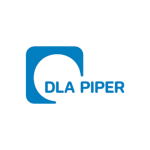As part of the 2021–2022 federal budget, the federal government has pledged to remove ‘red tape’ by introducing a suite of tax and regulatory changes that will assist companies in implementing employee share schemes (ESS).
As detailed in new exposure draft legislation, the new reforms will apply on an exemptions basis to alleviate companies from having to comply with a number of onerous regulatory obligations.
Key highlights
The new regime will remove the taxing point in the tax deferred scheme that is triggered upon cessation of employment.
For ESS that are offered to directors and employees requiring no monetary consideration:
An Australian Financial Services Licence (AFSL) will no longer be required to operate the scheme;
General financial advice may be provided without an AFSL;
The restrictions on hawking, advertising and financial products will not apply; and
Offers made under the scheme will be exempt from Australian Securities and Investment Commission (ASIC) disclosure requirements.
For ESS that are offered to independent contractors or require payment to participate, employers will need to ensure that they comply with the new rules in the Act to access regulatory relief. Compliance generally requires provision of sufficient disclosure documentation and adhering to new thresholds in the Act. Importantly, this relief applies to any contribution plan or loans related to the ESS.
Removing cessation of employment as a taxing point
In a welcome move for Australian residents and businesses, a taxable event will no longer arise on a tax-deferred ESS when an employee ceases their employment.
The current tax-deferred ESS rules allow taxation of ESS interests to be deferred and not taxed upon grant. One such (deferred) taxable event occurs when an employee ceases their employment. This taxable event often causes a timing mismatch between when the participant is liable to tax and when the participant could obtain proceeds from the ESS interests to pay that tax liability. This mismatch was seen as an inequitable and onerous position for employees.
In addition, from an international perspective Australia’s tax rules did not align with international standards, making issuing ESS interests in Australia somewhat less attractive. Given the divergence between the deferral rules in Australia and elsewhere, significant adjustments were often required to customise Australian ESS plans for international businesses. Such adjustments should not be required as a result of these changes.
The removal of this taxable event means that:
Employees who cease employment may be able to retain their ESS interests and not be required to dispose of a portion of the shares to cover any tax liability;
It removes the need to value options or shares under complex tax rules in order to determine the tax liability (often at a time where a private company is not otherwise valued and could require expensive valuations for one employee); and
It provides for simpler structuring and drafting of employee share option plans.
Under the new rules, ESS interests in the tax-deferred scheme will be taxed upon the earliest of the following events:
For options and rights:
If the right is not exercised, when there is no real risk of forfeiture and no restriction on disposal of the right;
If the employee exercises the right, when there is no real risk of forfeiture or no restriction on disposal on the right or the resultant share;
For shares, when there is no real risk of forfeiture and no restriction on disposal, or
For shares and options/rights - a period of 15 years from grant.
According to the draft legislation, the new rules will come into force on the first quarter of the calendar year after the day the new law receives Royal Assent meaning it may come into force as early as October 1 2021 or January 1 2022.
Changes to the Corporations Act: A new Division 1A of Part 7.12
The exposure draft introduces a new ESS regime in Division 1A of Part 7.12 of the Corporations Act (the Act). Broadly, the new division sets out how companies can qualify for regulatory relief and consequences of any breaches.
How does an ESS qualify for regulatory relief under the new reforms?
The new Division 1A does not apply to an ESS that allows directors and employees to participate without requiring monetary consideration. Thus, these ESS plans will qualify for regulatory relief automatically.
Instead, the new Division 1A will apply to ESS that requires payment to participate, or is offered to independent contractors. It sets out the following requirements to be satisfied.
First, the issued interests must be ‘ESS interests’, which broadly include options and rights to acquire ordinary shares and ordinary shares. However, the provisions also apply to certain listed stapled securities.
Secondly, the participants in the scheme must be ‘ESS participants’. These include employees, directors or independent contractors of the issuing body or an associated body corporate of that issuing body. Note that, where an offer is made to independent contractors certain provisions are triggered.
Thirdly, the total number of products issued under the scheme over the previous three years must not exceed the ‘issue cap’ of 5% for listed bodies or 20% for unlisted body corporates.
For an unlisted entity, there is the additional ‘offer value cap’ restriction that no participant receives more than AU$30,000 worth of interest under the scheme in a 12-month period (an increase from the previous cap of AU$5,000).
Fourthly, the company must lodge a notice of intent that it will establish a ESS to ASIC prior to providing ESS offers.
Fifthly, the company must provide the required disclosure documents as part of the offer to its participants. An unlisted entity may also be required to prepare valuations for the option or right and the value is to be disclosed in these documents. The exposure draft sets out the below criteria for valuations:
The valuation must be made one month before the units or options will be exercised or the incentive rights will vest;
The valuation must be provided to the participant in the ESS 14 days before the exercise or vesting day;
The valuation must set out the method used to conduct the valuation;
The valuation must be conducted on a reasonable basis;
If the company has a turnover of greater than AU$50 million – the valuation must be an independent expert valuation; or
If the company has a turnover of less than AU$50 million – the valuation must be an independent expert valuation or a directors’ valuation resolution. A directors valuation resolution may include the use to the Australian Taxation Office’s safe harbour methodology for valuing ESS interests (ESS 2015/1).
The new rules also permit loan plans and contribution plans subject to certain requirements.
What regulatory relief is available for employee share schemes that qualify?
Companies that rely on existing exemptions in the Corporations Act or existing class order exemptions may continue to apply those exemptions. Where the above conditions are met, the new Division 1A will provide an additional form of relief to class order exemptions. Relief includes not requiring an AFSL to operate the ESS and not being required to prepare a product disclosure statement for the purposes of making offers under the ESS.
What are the consequences of non-compliance with the new regime?
ASIC may issue a stop order for where the ESS does not comply with the new Division 1A rules. Before issuing the stop order, ASIC must hold a hearing and allow any interested persons to make oral or written orders about whether such orders should be made.
The company, or its directors, who makes an ESS offer may be liable if there is a material misleading or deceptive statement in any of the disclosure documents or a new circumstance arises during the ESS offer period that should have been included in the ESS disclosure documents. Liability under the new regime is punishable by up to 15 years imprisonment and, in some instances, an offence of strict liability with 120 penalty units.
There are several defences available to the company or its directors including that due diligence was conducted on the ESS disclosure documents, lack of knowledge or reasonable reliance was provided.
To avoid liability, the takeaway is to obtain adequate legal advice before implementing and offering ESS interests.
If you require assistance in setting up an ESS or have any questions to the new ESS regime, please contact us below.
James Newnham
Partner, DLA Piper Australia
Gerry Bean
Partner, DLA Piper Australia
Kelvin Yuen
Senior associate, DLA Piper Australia














